The Rwanda-backed M23 rebel group appears responsible for mass graves containing scores of bodies found in the village of Kishishe, North Kivu province in eastern Democratic Republic of Congo, Human Rights Watch said today. The bodies are believed to be those of villagers and captured militia members that M23 fighters executed between November 2022 and the armed group’s departure from Kishishe in April 2023.
The Congolese government should seek assistance from the United Nations, African Union (AU), and partner governments to conduct proper exhumations, return remains to families, and hold those responsible to account. The UN Security Council should add M23 leaders, as well as Rwandan officials who are assisting the group, to its existing sanctions list.
“Congo, the United Nations, and the African Union need to address the mounting evidence that the M23 committed numerous killings in the village of Kishishe,” said Clémentine de Montjoye, Africa researcher at Human Rights Watch. “There’s an urgent need for the proper gathering of evidence, impartial investigations, and informing families about the fate of their loved ones.”
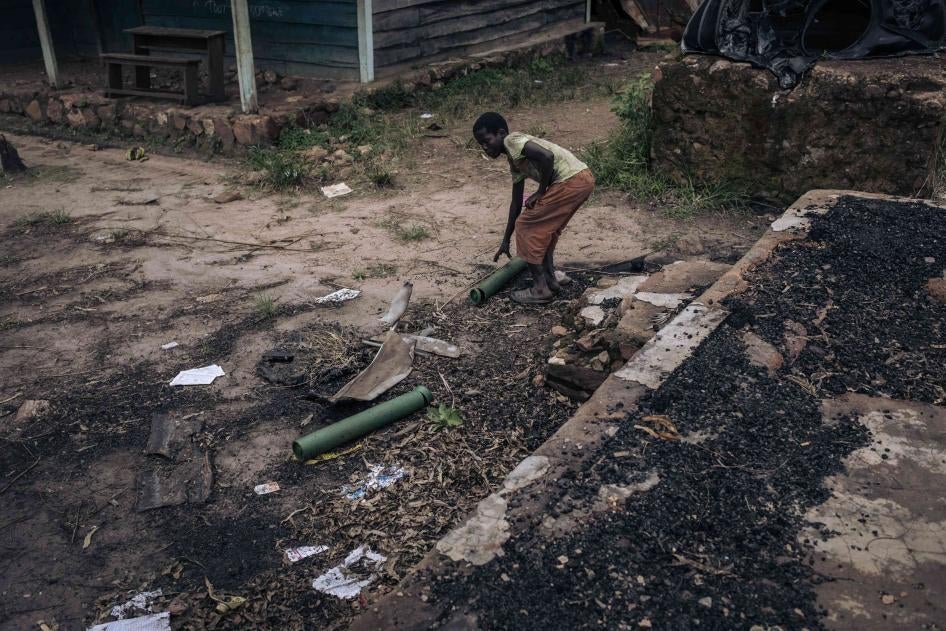
Human Rights Watch documented the M23’s atrocities in Kishishe, with witness accounts, satellite imagery, photographs, and videos. In addition to executions, M23 fighters set fire to at least one house containing bodies, used three schools as bases, one of which was destroyed, and denied students safe access to education.
Congolese authorities, as well as Human Rights Watch, Amnesty International, and the UN Stabilization Mission in Congo (MONUSCO), have investigated events in Kishishe, but a more comprehensive, international investigation is needed after M23 forces withdrew.
Human Rights Watch reported in February that, on November 29, M23 rebels summarily killed at least 22 civilians in Kishishe following fighting with factions of Mai-Mai Mazembe, Nyatura, and the Democratic Forces for the Liberation of Rwanda (Forces démocratiques de libération du Rwanda, FDLR). At the time, reliable information collected by Human Rights Watch indicated that the M23 killed at least another 10 civilians while searching for militia members. Further reports by the UN and others concluded that M23 fighters may have unlawfully killed many more people, including captured fighters.
In April and May, after the M23 withdrew from Kishishe, Human Rights Watch interviewed 21 people by telephone, including some who said they had witnessed executions or whom the M23 forced to bury bodies. Others had voluntarily buried bodies after the M23 left the area. Interviewees provided information on 14 mass graves though these appear to be only a fraction of total burial sites. All interviewees believed that the M23, which controlled Kishishe between late November and early April, executed the vast majority of the victims.
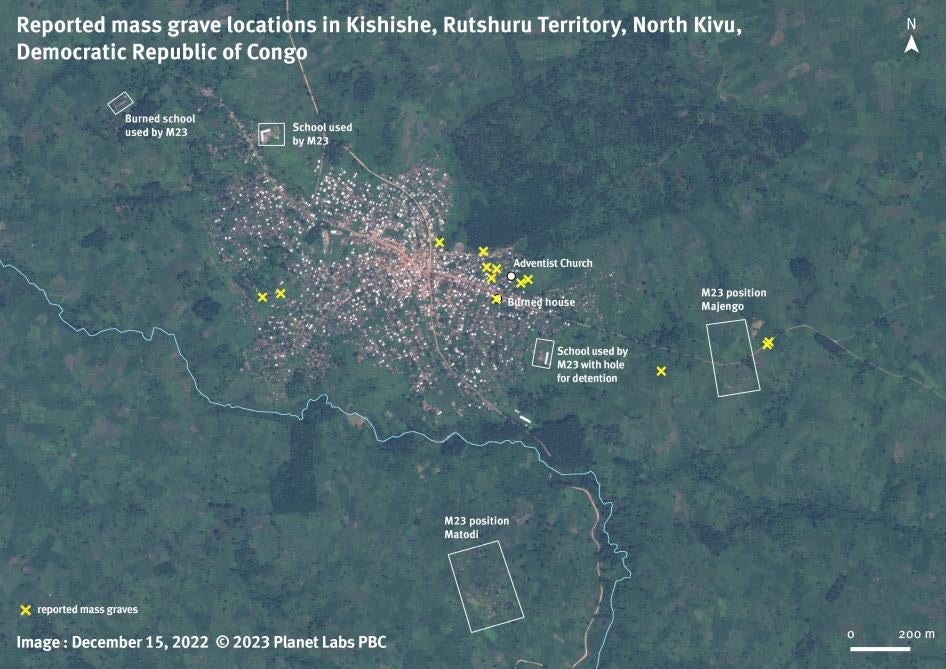
Residents of Kishishe who witnessed executions or buried bodies said that common graves with up to 20 bodies were dug after the M23 occupied Kishishe. After the M23 withdrew, other graves were found. The villagers said they dug new graves to bury bodies they discovered. They said that some of the dead were not identified at the time of burial because they were likely displaced from other localities in the area.
Witness accounts indicate M23 fighters killed many civilians and captured militia members after fighting ended in November and they had captured the village. A man captured by the M23 described the fighters’ trail of killings:
I saw four dead bodies of neighbors next to my house … A bit further in the village, they killed a man of the Shi tribe and covered his body with a blanket to hide him. Nearby, when we got to the market, I saw a neighbor and his wife and son. They killed the two men and left the woman. They moved on and found a house with three men hiding inside. They killed them with their hoes. Then we got to the [Adventist] church, they made everyone come out and executed them. There were maybe around 20 people killed.
Other residents and witnesses corroborated the presence of a mass grave near the Adventist church likely to contain between 15 and 20 bodies. Satellite imagery from December shows spots of bare soil at this location.
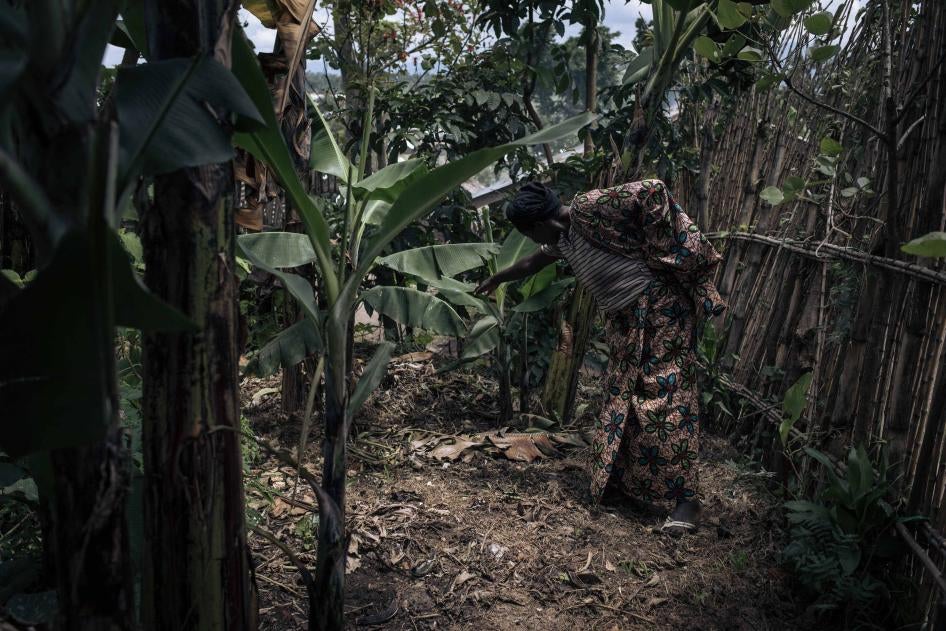
The relative of a victim said that M23 fighters came to her house and took her uncle away: “They shot him dead and threw his body in a ravine. We buried him ourselves.”
One villager who was too ill to flee said that, after the November killings, M23 fighters came to his house and told him to collect some spades and hoes. “They told me there were dead people to bury … [T]ogether with nine other men, we dug one grave in which we buried 15 people,” he said. “The next day, we dug other graves and buried 17 more people [in different graves]. They told us they died in combat but it’s not true. They all died from gunshot wounds. Three had been shot in the mouth. The others in the chest and some had their knees broken.”
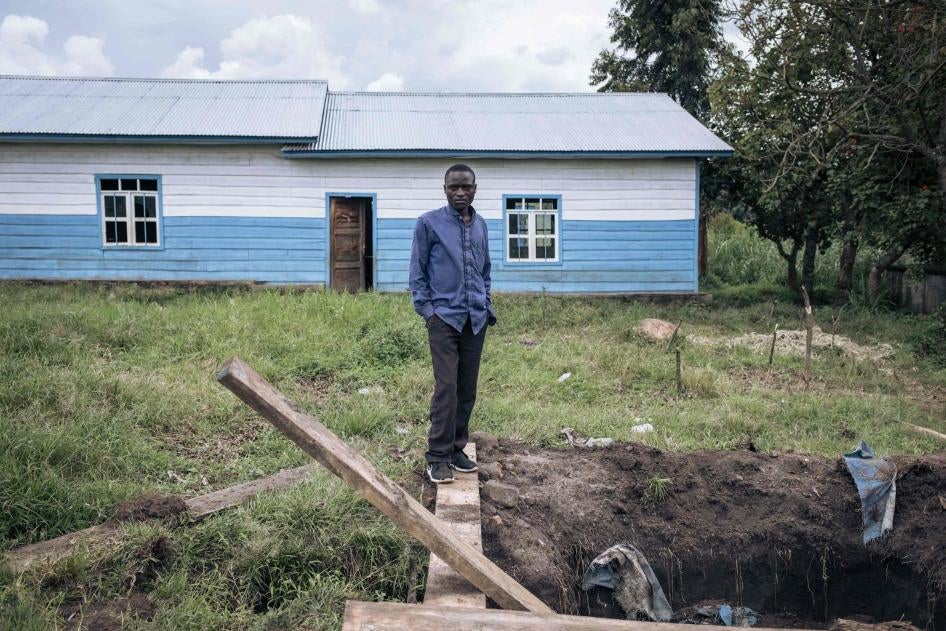
A 22-year-old man said that after the M23 captured Kishishe, he was forced the join them and told they were going to fight the FDLR. “We didn’t find any FDLR but rather farmers who were laboring in their fields. Everyone they found on their path, they killed, saying they were FDLR.” When he returned to Kishishe, he found the bodies of his father and younger brother: “They said ‘Look at these Mai-Mai we have killed.’ I had to pretend not to know them so that they don’t accuse me of being a son of a Mai-Mai and kill me too.” He said he and some other residents buried the two with three other unidentified bodies in a grave.
Graves were dug either near M23 positions, a church where people may have sought refuge, a police station, or in residents’ plots. Some bodies were found in latrines. “It’s only after the M23 left that we found many more human remains [and graves],” said one resident. “We think some were detained and executed [when the M23 left Kishishe].” The resident said that more bodies were found on March 28 across the Nyabihanda River, at a location villagers called “Matodi.” “There were 31 skulls in a hole the M23 had dug themselves…. The hole was just next to their position on the hill.” Satellite imagery shows a military position made of trenches and dugouts on the hill across the river, south of Kishishe.
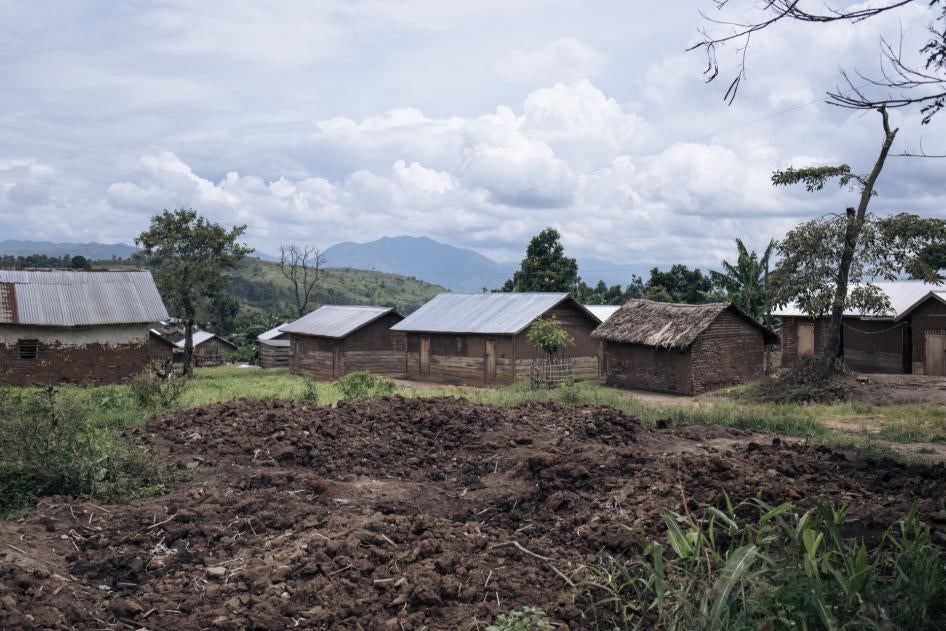
Residents also said that several houses were burned, including at least one with bodies inside. “There were [bodies of] women, men, and children but I don’t know the exact numbers,” said a witness who said the rebels had captured him and tied his hands. “The fighters burned the house by pouring petrol over it and setting it on fire. I was with them. I saw it.” Human Rights Watch identified the house using satellite imagery.
In a December, 3 statement, the M23 rejected murder allegations and said that eight civilians had been killed by “stray bullets” during the fighting in Kishishe. On June 6, the M23 spokesperson told Human Rights Watch that the armed group denied allegations that it had committed executions, set fire to houses, or occupied schools.
The armed conflict in eastern Congo is covered by international humanitarian law, or the laws of war, including Common Article 3, Protocol II to the 1949 Geneva Conventions and customary international law, which prohibit summary executions, pillage, forced recruitment, and other abuses. Serious laws-of-war violations committed with criminal intent – deliberately or recklessly – are war crimes. Commanders may be criminally responsible for war crimes by their forces if they knew or should have known about such crimes and failed to prevent them or punish those responsible. Rwandan officials may be complicit in war crimes through their military assistance to M23 forces.
The Congolese authorities, with the assistance of international partners, should ensure a prompt and impartial investigation into killings and other crimes perpetrated in Kishishe since November 2022. All those responsible should be fairly prosecuted, including as a matter of command responsibility. Findings of investigations should be made public.
Congo’s government should invite UN or independent international forensic experts, including those with experience working before criminal tribunals, to help preserve and analyze evidence in common and mass graves. Exhumations without forensic experts can destroy critical evidence and greatly compromise the identification of bodies. Remains of individuals found to be buried in graves or left unburied should be returned to their families, Human Rights Watch said.
“Congolese authorities should allow an independent investigation with UN participation into the M23’s occupation of Kishishe, and make its findings public,” de Montjoye said. “International sanctions should be promptly imposed on those implicated in abuses, including Rwandan commanders supporting the M23.”
